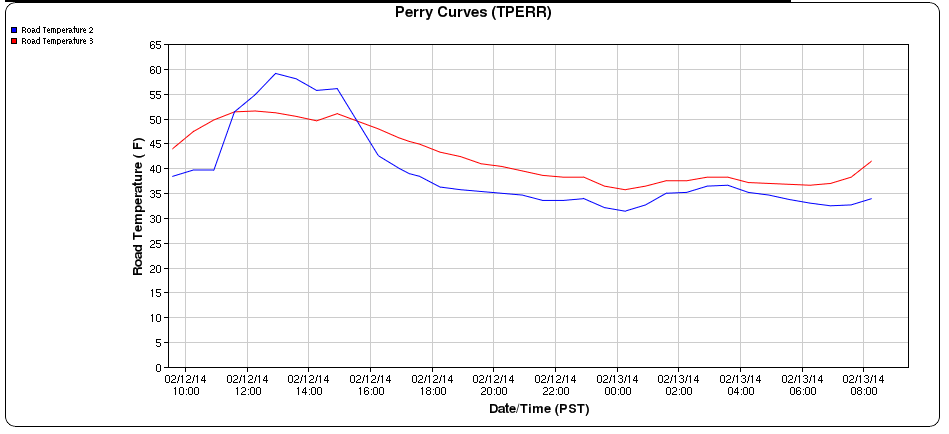Phase 1 is the arctic front. It will be moving into the Inland Northwest today (Friday). Here's the University of Washington WRF model forecast temperatures for this morning at 7am.
You can see the coldest air is just north of the US/Canada border, as well as in northwest Montana. Now look at the forecast for this afternoon:
More blue and purple color. In other words, temperatures in some locations will be falling today instead of rising. That happens a lot in the winter for folks in the Dakotas or Minnesota. Here in the Inland NW though, we typically find this is hard to do. So temperatures may rise a couple of degrees, but not a lot.
The northeast winds will blow all night and through Saturday. It will be a rather raw day on Saturday. Below is the WRF forecast for Saturday afternoon. Temperatures east of the Cascades will be in the teens with a stiff northeast wind. Not a good day for outdoor activities.
It will be interesting to watch the temperature at Spokane Airport on Saturday. The coldest March day in Spokane is 13F, which occurred on March 12, 1906. At this point, our forecast is for 14F. So it's gonna be close.
OK, so we'll have plenty of cold air. But we need some moisture. And that's Phase 2. There is a moist warm front in the Pacific headed our way. Here's the satellite image from Friday morning.
 |
| IR Satellite image 1015am PST |
The batch of clouds over the West Coast will stay south of us, giving California some much-needed rain. We might see a little light snow from it on Saturday afternoon/evening, just a dusting if anything. Our storm is in the middle of the image, south of the Aleutian Islands. We won't see the entire storm. But the important part is that band of clouds north of the Hawaiian Islands. This won't be a true "pineapple express", but similar to it.
That moisture will reach our area late Saturday night. Snow will start in earnest before sunrise Sunday and continue through Sunday night before changing over to rain on Monday.
How much snow will we get? Here's a display of the GFS and NAM forecast snowfall.
The GFS forecasts are in the blue/purple colors, and the NAM are in the red/orange colors. The white lines area averages of the various models. Time goes from left to right. So you can see that one GFS forecast gives us 14", while a NAM forecast would give us only 3". That's quite a range. But it's not unusual. We often see these kinds of differences in the computer models.
We've discussed in a previous post on this blog the difficulty of forecasting snowfall. Even if you get the temperature and moisture forecast correct, the snow ratio can still make a big difference. A light fluffy snow would pile up a lot more than a wet heavy snow.
Here's our current forecast for snowfall Sunday through Monday morning.
As we saw, there's still a lot of variation in how this event could pan out.
After this event, we will warm up and change to rain. There is the potential for some heavy rain around Wednesday or Thursday. This coupled with the melting snow and frozen ground could lead to more flooding problems, similar to what we saw in mid-February.






































